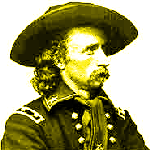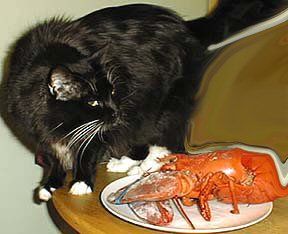
Black Elk's Vision
It was the day of the Summer Solstice, the time of the annual Sun Dance, the most important religious celebration of the Sioux, a sacred ceremony that symbolized regeneration and a belief that there is no end to life, but only a never-ending cycle of deaths and rebirths.
As the sun began to set in the western sky, young Black Elk and the other dancers entered the Sun Dance Lodge, a specially constructed teepee built around the sun pole, a large forked tree selected to represent the center of the world and to connect the earth to the heavens.
One by one, the dancers presented themselves to Takoda, the tribe's medicine man. Like the others, Black Elk bravely stood tall and silent as the holy man pierced a fold of loose skin on his breast with a sharp knife and inserted a skewer of bone into the incision. Each brave's bone skewer was then attached to the sun pole in the center of the lodge with a long rope. The Sun Dancers then leaned backward and used the weight of their bodies to pull against the ropes as they valiantly fought against the pain in an attempt to liberate themselves from their bondage. Eventually, after much suffering, the braves were freed when their bone skewers broke the skin and were ripped from their chests.
The pain in Black Elk's breast intensified as the weight of his torso pulled against the rope that held him captive. Eventually, the skin on his chest, stretched to its limits, slowly began to tear, but the process would take many hours—perhaps days—and Black Elk would have to endure the self-inflicted torture like a man.
During the subsequent three days, the dancers continued in their attempts to break free, all the while trying to courageously bear the intense pain, excruciating though it was. Teetonka was the first Sun Dancer to succeed, followed shortly by Kohana. Blood trickled down Black Elk's smooth, hairless chest and perspiration glistened on his skin as he continued to pull against the rope that bound him to the sun-pole. Finally, teetering on the brink of unconsciousness, Black Elk broke free.
When the Sun Dance was over, the dancers were laid down on beds of sage. Many of them had seen visions during the course of their painful ordeal. They now recited these accounts to the holy men of the tribe who listened patiently to their predictions concerning the weather, the likelihood of rain, the birth of a child, the size of a herd of buffalo or the success or failure of a crop.
Young Black Elk's vision, however, was of nothing so mundane. Feverish from the intense pain he'd endured as well as the lack of food, water and sleep, his soul had left its body and walked through the world of Wakan-Tanka, the Great Spirit. Deep in his spiritual vision, Black Elk was unaware of the medicine man who sat near him, listening carefully to his revelations. Only after Black Elk fell into a deep, silent slumber, did Takoda leave the young brave's bedside and enter the chief's teepee.
"Black Elk has had a most unusual vision," the medicine man announced emotionlessly. "He has witnessed a great battle between our people and the White Man."
Chief Yellow Hawk, who was one of the oldest and wisest members of the tribe, sighed with resignation.
"I am not surprised. The Great White Leader has threatened to send soldiers to force us to go back to the reservation. He is probably afraid we will get our land back."
"Land! It is always land with them. Will the White Man ever have enough land?" the medicine man asked bitterly.
"I doubt it very much. And now that yellow rocks have been discovered in the Black Hills, the White Man will be more determined than ever to keep them. But what else have you to tell me about Black Elk's vision?"
Takoda smiled triumphantly when he remembered the young brave's words.
"He spoke of a great victory for our people."
Yellow Hawk looked at his friend with unconcealed skepticism.
"Do you honestly think we can defeat the White Man?"
"It is true that our enemy has many warriors with guns and cannons to use against us, but perhaps Wakan-Tanka will smile upon us and our people will prevail."
"I will hear Black Elk's words myself," the chief declared decisively.
Yellow Hawk and Takoda went into the bison-hide teepee where the young brave was sleeping fitfully. The medicine man leaned forward and spoke to him.
"Black Elk, the chief is here with me. He wants to hear about your vision."
Black Elk's eyes fluttered open.
"I rode on the wings of a great eagle," he said with difficulty, his voice dry and his words slurred from pain and exhaustion. "It took me to the summit of a great hill. There I saw our people camped alongside a river. They were happy and full of hope, for Crazy Horse had just won a battle against the White invaders."
"A minor battle," the medicine man whispered to the chief.
"Then I saw a golden-haired warrior, a hero of the White Man's war between the North and the South. He will attack our people, but he will fail. It will be a great battle, one often spoken of in the years to come, and we will win a glorious victory over the White Man."
"But what will happen after this battle?" the chief asked. "Did your vision reveal the ultimate fate of our people? Will the White Man leave us alone?"
"Peace," Black Elk said, smiling serenely. "When the sun sets on that great day, there will be no more war with the White Man, no more hunger and no more being forced to live on a reservation. We will be free again."
Several minutes later Black Elk drifted off to sleep.
* * *
In the days following Black Elk's first Sun Dance, relations between the Sioux Nation and the United States government worsened. Many warriors who had previously signed treaties with the White Man left their reservations and went to live with the bands of free-roaming Sioux and Northern Cheyenne who were living in southeastern Montana, a territory not ceded to the government by any treaty.
In response to these actions, the federal government issued a command to all Sioux living there—both those who had entered into treaties and those who had not: "return to the reservation or else." When the warriors refused to obey the edict, the military was called in to force the "hostiles" to comply.
The Sioux had two options, neither of which was appealing: they could live in the free territory of Montana and be subject to attack by the U.S. Army or they could reside on the reservation and starve. Many brave warriors such as Crazy Horse, Red Cloud, Gall and Sitting Bull chose to fight. Two minor victories against the White Man in the spring of 1876 gave the people hope and the determination to continue their resistance.
"It is as Black Elk's vision predicted," Takoda told Yellow Hawk.
On June 25, 1876, the Seventh Cavalry, led by the flamboyant Lt. Colonel George Armstrong Custer, spotted a group of about forty warriors near the Little Bighorn River. Against his superiors' orders, Custer decided to attack, unaware that the number of warriors in the village amounted to three times his own troop strength.
Custer divided his forces into three groups. The first, under the command of Major Marcus Reno, was to cross the river and charge the village in a coordinated effort with the second group of troops under Custer's command. Meanwhile, Captain Frederick Benteen was to lead the third group and cut off the Sioux's escape route through the upper valley of the Little Bighorn.
As ordered, Major Reno's men attacked the southern end of the village where they soon found themselves in a desperate battle. With little hope of any assistance from Custer, Reno halted his charge and eventually retreated uphill to the bluffs east of the river.
While Reno's men fled, Custer's troops attacked from the other end of the village. Cheyenne and Sioux braves together crossed the river and fought the advancing cavalrymen, forcing them back. Meanwhile, another group of warriors under Crazy Horse's command surrounded Custer and his soldiers, raining down gunfire and arrows on them. In less than an hour, Custer and all two hundred and ten of his men were killed in the worst American military disaster to date.
"This was the glorious battle Black Elk saw in his vision," Takoda announced proudly to Yellow Hawk. "We have defeated Long Hair. Now the White Man will surely let us live here in peace."
Yellow Hawk was not so certain. The White Man was not one to back down after defeat, even one as great as this.
As he walked to the great lodge to confer with his fellow chiefs, he encountered Wenonah, Black Elk's mother. The woman appeared to be emotionally distraught.
"What is it, Wenonah?" Yellow Hawk asked. "What upsets you?"
"It is Black Elk, my son. He was killed during the battle."
A terrible insight suddenly struck Chief Yellow Hawk, an instinctive understanding of the young warrior's prophecy.
"It is just as he envisioned during the Sun Dance," the chief said, comforting the grieving mother. "He foresaw the great battle, and for him, at least, it meant peace, freedom and an end to war with the White Man."
Yellow Hawk walked away, adding sadly to himself, "Only time will tell what will become of the rest of us."
* * *
The Battle of Little Bighorn, commonly referred to as Custer's Last Stand, proved to be the shining moment in the Sioux's valiant attempt to remain free. Just as the young Black Elk had foreseen, they achieved a great victory that day, but that triumph was all too fleeting. Outraged over the deaths of Custer and his men, the U.S. government sought revenge. Territorial lines were redrawn, placing the Sioux's sacred Black Hills outside the reservation and leaving them open to White settlement.
Sadly, within a year, the once-great Sioux Nation was defeated and broken.
Note: I have learned since writing this story that there was an actual man named Black Elk. The character in this story was not based on him or any other actual person.

Salem had a vision last night. It involved a lobster dinner and Godiva chocolate.


